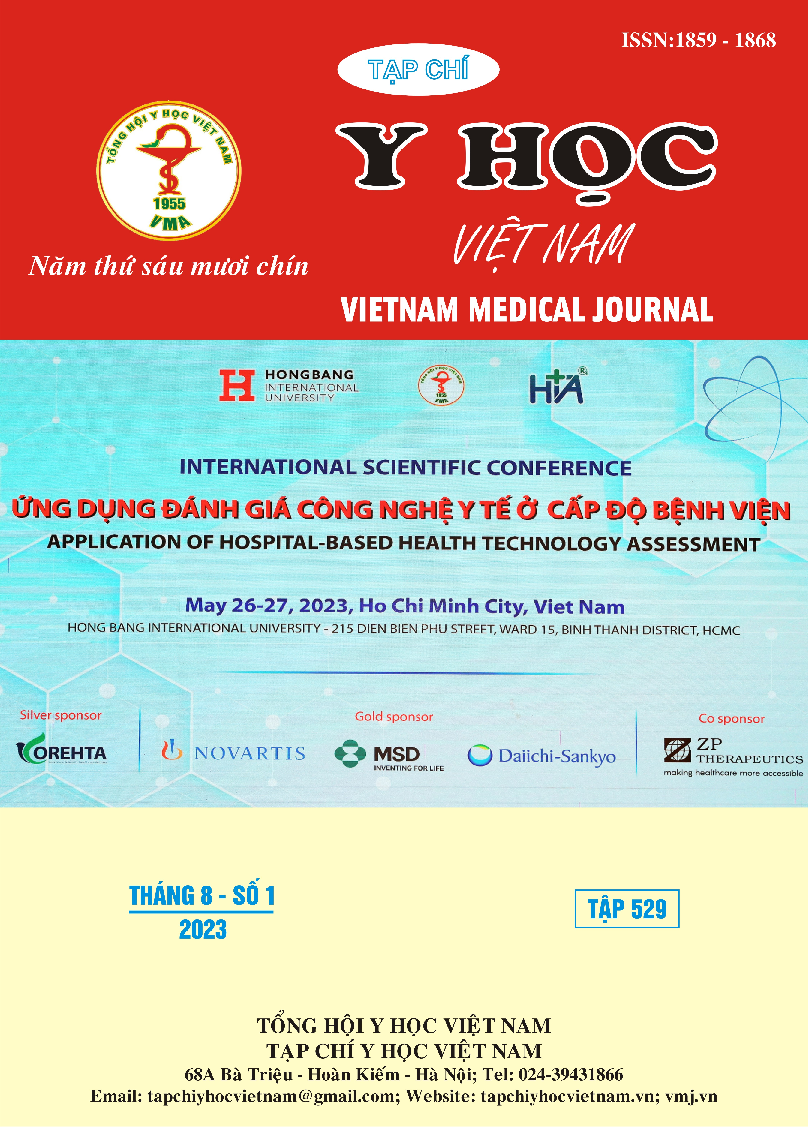CÁC YẾU TỐ LIÊN QUAN ĐẾN PHỤC HỒI CHỨC NĂNG NHẬN THỨC TRÊN BỆNH NHÂN CHẤN THƯƠNG SỌ NÃO
Nội dung chính của bài viết
Tóm tắt
Mục tiêu: Tìm hiểu các yếu tố liên quan đến kết quả phục hồi chức năng nhận thức trên bệnh nhân chấn thương sọ não. Đối tượng và phương pháp nghiên cứu: Gồm 24 bệnh nhân chấn thương sọ não lần đầu tiên được điều trị tại Bệnh viện Phục hồi chức năng Hà Nội từ tháng 08/2019 đến tháng 11/2020. Bệnh nhân được tập luyện phục hồi chức năng nhận thức trong thời gian 1 tháng tại bệnh viện. Đánh giá sau 1 tháng điều trị. Kết quả: Độ tuổi hay gặp là 20 – 60 tuổi chiếm 84,9%, tuổi trung bình 35,3 ± 15,1. Tỉ lệ nam/nữ là 3,71. Thời gian chấn thương sọ não trong nhóm nghiên cứu hay gặp là 6 tháng – 1 năm chiếm 36,4%. Sau 1 tháng điều trị cho thấy mức độ khả năng vận động và nhận thức bằng thang FIM tăng lần lượt từ 41,96±16,164 lên 46,67±16,877 điểm (p<0,05) và 19,58±7,983 lên 22,46±7,768 điểm (p<0,05). Tuy nhiên kết quả phục hồi nhận thức và nhóm tuổi, kết quả phục hồi nhận thức giữa nam và nữ, kết quả phục hồi nhận thức và thời gian trước và sau 6 tháng không sự khác biệt (p>0,05). Kết luận: Có sự cải thiện đối với bệnh nhân tập phục hồi chức năng vận động và nhận thức ở bệnh nhân chấn thương sọ não sau 1 tháng điều trị. Tuy nhiên kết quả phục hồi nhận thức và nhóm tuổi, kết quả phục hồi nhận thức giữa nam và nữ, kết quả phục hồi nhận thức và thời gian trước và sau 6 tháng không sự khác biệt
Chi tiết bài viết
Từ khóa
: yếu tố liên quan, phục hồi chức năng, chấn thương sọ não, thang điểm FIM, nhận thức
Tài liệu tham khảo
2. Seifert J. Incidence and economic burden of injuries in the United States. J Epidemiol Community Health. 2007;61(10):926.
3. Coronado V, McGuire L, Faul M, et al. Epidemiology and public health issues. In: Brain Injury Medicine: Principles and Practice,.Published online 2012.
4. Taylor CA. Traumatic Brain Injury–Related Emergency Department Visits, Hospitalizations, and Deaths — United States, 2007 and 2013. MMWR Surveill Summ. 2017;66.
5. Nguyễn Tuấn Anh và Lưu Sỹ Hùng. Nghiên cứu hình thái học của tổn thương dập não do tai nạn giao thông đường bộ qua giám định pháp y , Tạp chí Khoa học ĐHQGHN. Published online 2017.
6. Demir Y, Köroğlu Ö, Tekin E, et al. Factors affecting functional outcome in patients with traumatic brain injury sequelae: Our single-center experiences on brain injury rehabilitation. Turk J Phys Med Rehabil. 2019;65(1):6
7. Al Yazeedi W., Venkatachalam L. Factors Influencing Rehabilitation Outcome in Adult Traumatic Brain Injury in Qatar. Published online 2010
8. Niemeier JP, Perrin PB, Holcomb MG, et al. Gender Differences in Awareness and Outcomes During Acute Traumatic Brain Injury Recovery. J Womens Health. 2014;23(7):573-580


